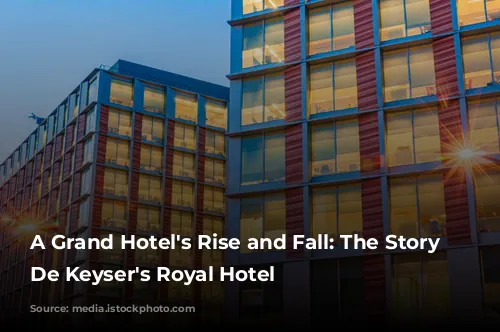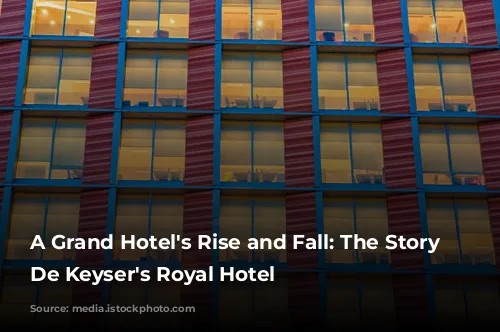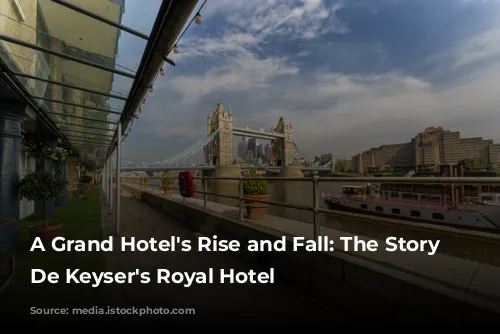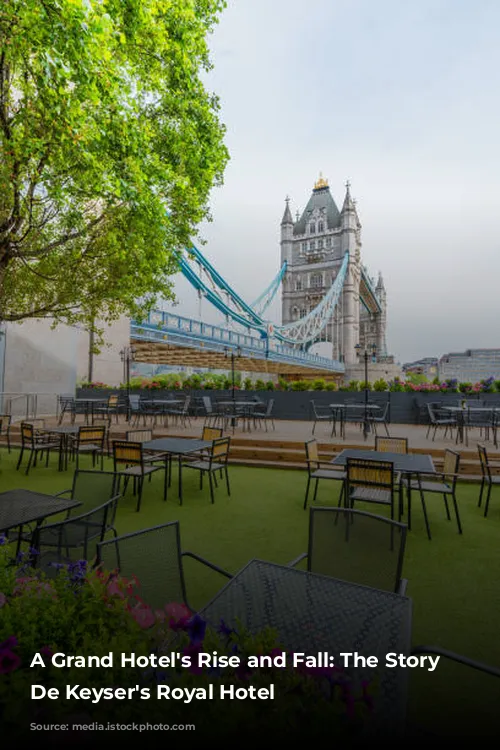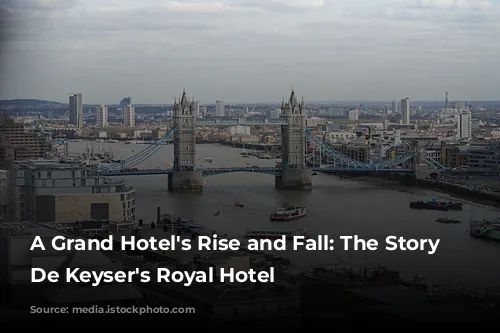De Keyser’s Royal Hotel was a magnificent establishment that once stood proudly on the Victoria Embankment in London, a testament to the era’s grandeur. This iconic hotel, built on the site of the former Bridewell Palace, was a popular destination for travelers from across Europe, offering an unparalleled level of luxury and service.
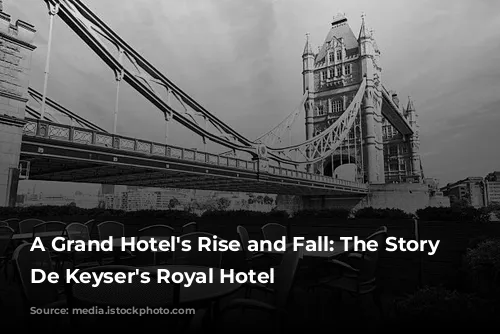
A Family Legacy
Constant de Keyser, a Belgian immigrant, established the hotel before 1845, catering to the discerning tastes of his clientele. His son, Polydore de Keyser, took over the reins of the hotel in 1856, continuing the legacy of impeccable hospitality.
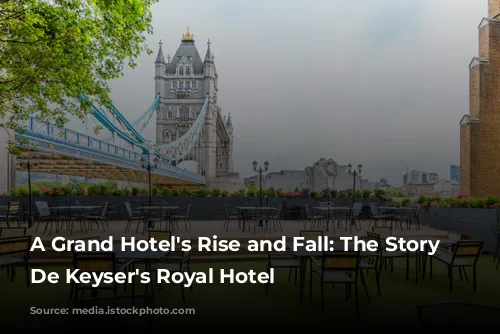
A New Era of Splendor
In 1874, De Keyser’s Royal Hotel underwent a dramatic transformation. A stunning new building, designed by renowned architect Edward Augustus Gruning, rose on the same site, boasting five floors and two basements. The building’s grand facade, facing the River Thames, featured a beautiful curved design, showcasing a striking combination of white Suffolk bricks and Portland stone. The hotel’s opulent interior, decorated in the French style, featured 230 lavish guest rooms and numerous event spaces, including a grand dining hall capable of hosting over 400 guests. The hotel’s furniture was imported from Paris, further enhancing its air of sophistication.
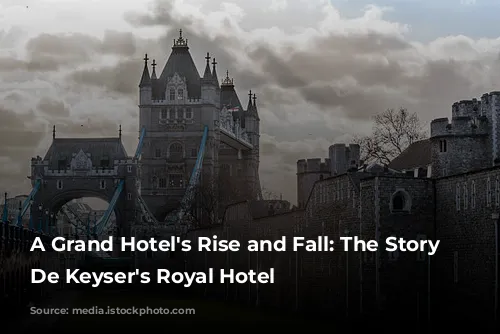
A City Landmark
In 1882, a second wing was added to the hotel, solidifying its position as London’s largest hotel, with the capacity to accommodate up to 480 guests. The hotel’s reputation for exceptional service and elegant accommodations solidified its place as a landmark in the city.
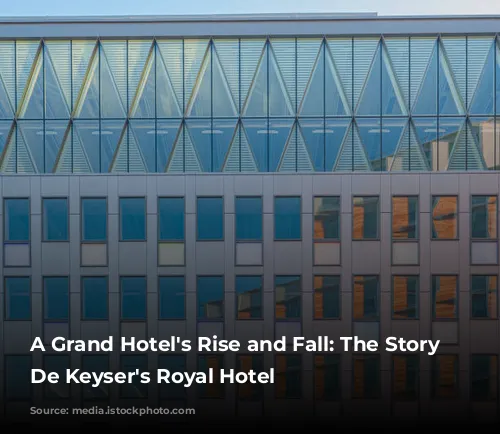
A Change of Hands
After Sir Polydore de Keyser passed away without children, the hotel was sold to a limited company in 1897. His nephew, Polydor Welchand de Keyser, assumed management, ensuring the hotel’s continued success.
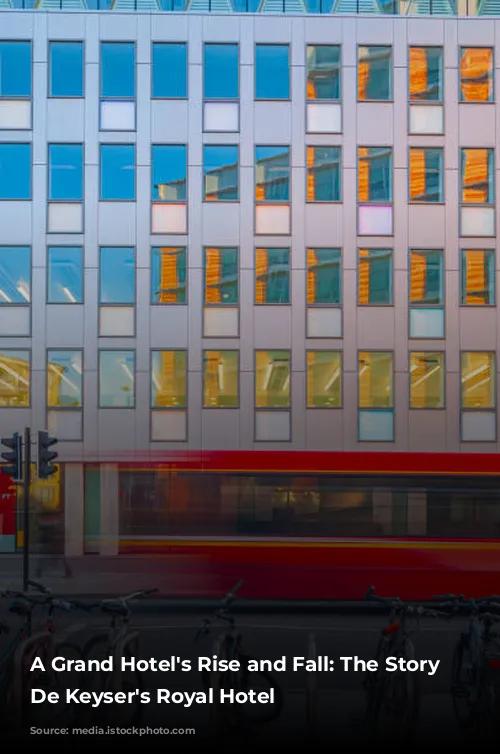
Wartime Turmoil
The outbreak of the First World War marked a turning point for De Keyser’s Royal Hotel. The growing anti-German sentiment across Britain led to the arrest and detention of many of the hotel’s German staff, including its manager. This, coupled with the general decline in travel during the war, resulted in the hotel’s eventual takeover by a receiver.
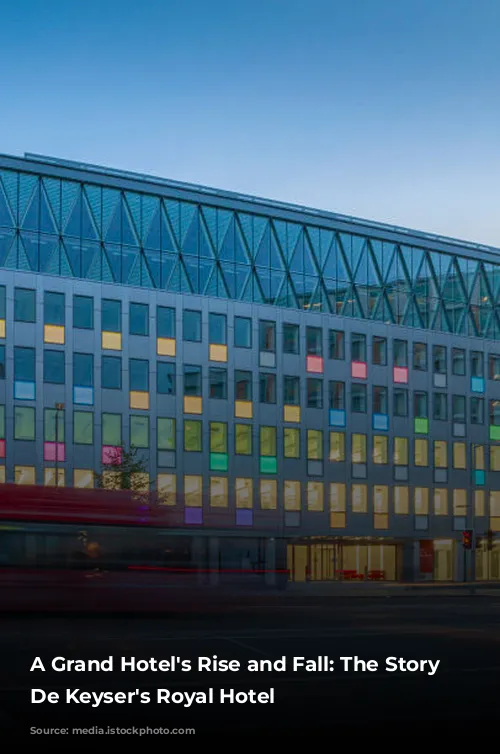
A Transformation into Adastral House
In 1916, the hotel was requisitioned by the Office of Works to house the Royal Flying Corps‘s headquarters. Renamed “Adastral House”, it served as the Royal Flying Corps‘s central hub in London until the formation of the Royal Air Force in 1918. For a brief period after, the building was occupied by the Royal Army Medical Corps.
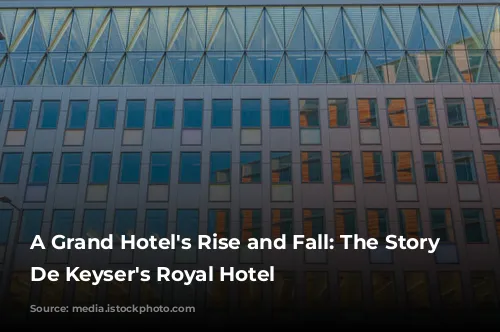
A Legal Battle for Compensation
The hotel’s owner pursued compensation for the requisitioning, leading to a landmark legal case: Attorney-General v De Keyser’s Royal Hotel Limited. The case reached the House of Lords, which ruled that the Defence of the Realm Act 1914 superseded the royal prerogative and that compensation was due under the Defence Act 1842.
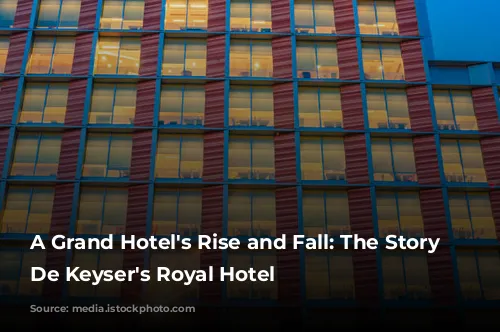
A Legacy Lost
Despite the legal victory, De Keyser’s Royal Hotel never reopened. The building was sold to Lever Brothers in 1921, becoming their London headquarters. In 1931, the hotel was demolished to make way for the construction of Unilever House.
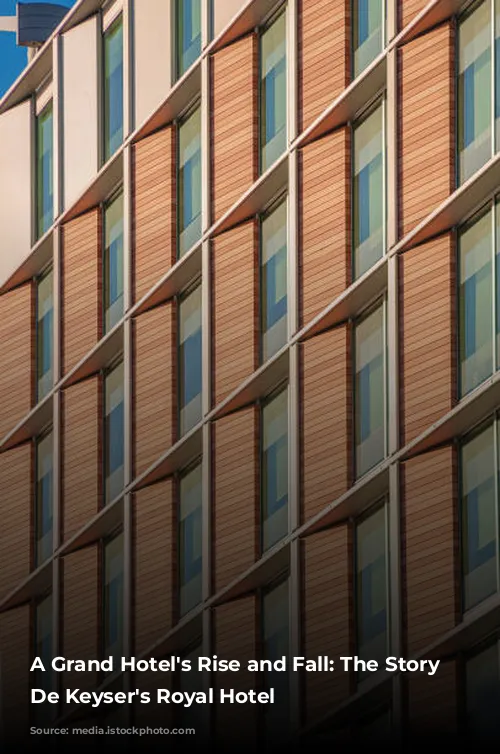
A Grand Legacy, Lost to Time
De Keyser’s Royal Hotel, a symbol of luxury and elegance, met its demise in the wake of wartime upheaval. The once-grand hotel, with its opulent interiors and impeccable service, became a casualty of historical events, leaving only a legacy of its grandeur in the annals of London’s history.
